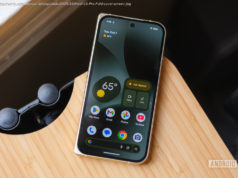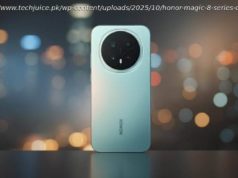Google Assistant has been a core part of my life since its debut. Whether it be using my Google Home Max for music, timers, and controlling lights, using other Assistant speakers throughout my home…
Google Assistant has been a core part of my life since its debut. Whether it be using my Google Home Max for music, timers, and controlling lights, using other Assistant speakers throughout my home for things like getting the weather when I get up in the morning, or using my phone for a quick answer to something trivial, I’ve come to depend on the voice assistant in my daily habits.
Early this year, Google revealed that Assistant would be arriving on a new form factor: Smart Displays. Now, the first one has arrived from Lenovo, and I’ve spent the past several days putting it through its paces.
Smart Displays have been hyped up for over half a year at this point, and that’s a lot to live up to. Smart speakers, though, have been on the market for a long time, and we’re pretty used to what they can do. How are Displays really different? There are a few main questions I want to answer that might give you an initial idea of whether or not these devices are for you.
The biggest question I’ve seen surrounding Smart Displays is how Google Assistant actually benefits from that new element. In short, it actually benefits in a lot of tangible ways. Google has crafted a new UI entirely for Smart Displays (with plenty of Material elements) and it takes full advantage of pretty much everything you’d use the Assistant for.
Another area Google has made Assistant more useful on this form factor is with the ambient information. When you tap the display, it presents a selection of useful information such as the weather, time, and any media that’s playing. It can also display calendar appointments and navigation info, which is handy.
Google Assistant clearly does benefit from a screen, but it’s debatable whether or not this is actually more useful than the voice interface of a speaker. However, there are some occasions where this form factor indeed becomes a lot more handy.
The biggest place I’ve found this useful, though, is for recipes. Setting up the Smart Display in kitchen makes it easy to ask for a recipe and keep that information on hand at all times. The icing on the cake, though, is that you can still interact over voice which is key in a situation where your hands are dirty.
One of my biggest wonders going into this past week was simply where I would put the Smart Display, and where it would work best. After testing it out in a few places, I settled on the kitchen as the best place, and Google definitely knows this is where a Smart Display shines.
As I mentioned, being able to pull up recipes on the display while cooking is a wonderful experience, and other features like timers work great in this context as well. While a Smart Display can be handy in other areas of your home, like the living room or bedroom, it’s probably not going to be much more useful than a speaker in those areas.
Smart Displays shine in the kitchen because, for most people, it’s one of the few rooms in a home that doesn’t already have a screen. Thanks to the small size, to, a Smart Display fits well in almost any kitchen. It’s not going to take up much of that precious countertop space.
The most important thing to ask yourself about a Smart Display, though, is what you’re actually going to use it for. Google’s marketing around these displays is like any other. It advertises it as a device that can basically do anything. However, as we’ve noted with speakers, most people only use this sort of product for a few basic things.
Over the time I used Lenovo’s Smart Display, my main use for it has been the same as a standard Assistant speaker. That is to say, I’m using it mainly for controlling my lights, asking questions, setting timers, and playing music. For most users, I think they’ll find the same to be true.
However, one place where the Smart Display has proven more useful to me versus a speaker — besides the aforementioned recipes, of course — is with any kind of content consumption. When I’m cooking or cleaning in the kitchen, I love to have a show on Hulu or my latest YouTube subscriptions playing. For a while, that’s been accomplished by mounting my iPad to a cabinet.
With a Smart Display, though, I can simply ask Assistant to play videos on YouTube from a specific channel, or use the display itself as a Chromecast target with any app of my choice. This use case clearly isn’t something these displays are ready for, though, as it leaves a lot to be desired. There’s no way to specifically access YouTube content beyond asking for a specific channel. For example, I can’t just ask it to play my subscriptions. There’s also no way to ask Assistant to play content from integrated services such as Netflix like you would with a speaker going to a Chromecast.
In this review, we’ve taken a broader look at Smart Displays as a form factor, but let’s spend a moment focusing in on Lenovo’s option itself. This is a pretty basic device, but it does a fantastic job. The 10-inch display on my unit is bright, has good touch response, and the angle is just right for viewing regardless of where the Display is placed.
This slideshow requires JavaScript.
The design of this product is subtle too. The front simply has the screen and a speaker grill, with an angular look on the back with a bamboo finish. It’s a good look that will probably fit with most kitchens, but might feel out of place in a living room setting. The power cable is fairly long, and tucks away nicely into the unit. I do wish, however, that Lenovo had adopted the Home Max’s method of keeping the outlet connection slim.
As for the speakers, they’re shockingly good. I honestly didn’t expect much here, but the speakers are loud, have strong bass, and are pretty clear. You’re not getting a Google Home Max, but I’d say this is just as good if not better than the standard Google Home.
Google Assistant is available in a lot of places, and Smart Displays fit into a specific niche. Personally, I wouldn’t use one of these anywhere other than my kitchen, because anywhere else it honestly isn’t any better than a standard smart speaker.
Start
United States
USA — IT Lenovo Smart Display Review: An Assistant-powered display to replace your kitchen Google...






